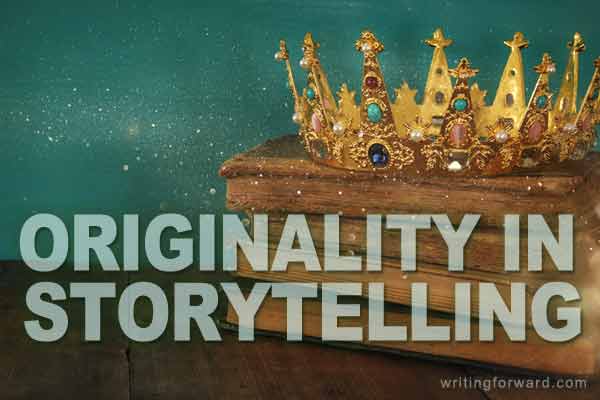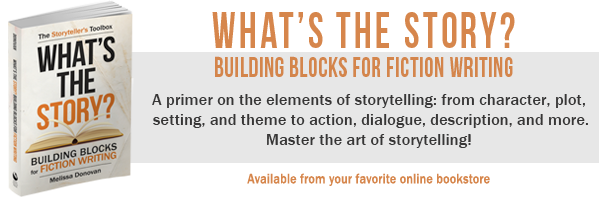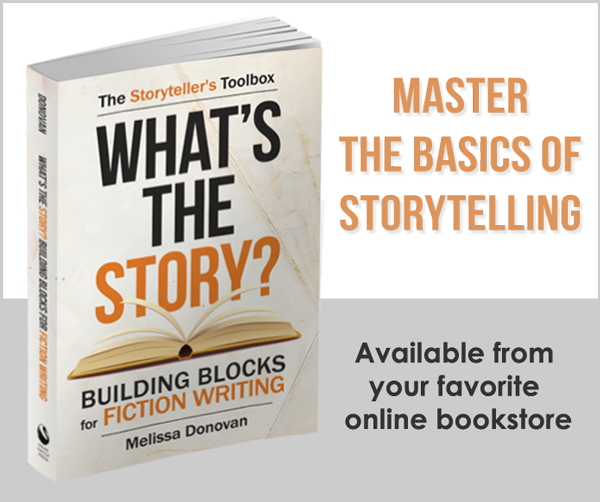Most storytellers strive to write fresh, original stories. They’re hoping to come up with an idea that’s never been done before.
Is that even possible?
Most stories are built with universal structures, or they use elements that can be found in the plethora of stories that already exists. That’s why readers can often predict the outcome of a plot (we’ve seen that plot structure before) or why some characters feel familiar, cliché, or stereotypical (we’ve seen those characters and their problems before).
But if it’s true that every story contains elements of stories that came before, then why do some stories feel original, even if they’re not?
How Many Plots Are There?
In his book The Seven Basic Plots: Why We Tell Stories (aff link), Christopher Booker claims that there are only seven different plots in all of storytelling.
Booker’s argument sparked much discussion among writers and readers, and a great debate ensued. Was it true? Are there only seven basic plots? And if so, how could any story written after the first seven possibly be original?
You can have a lot of fun trying to categorize your favorite fiction into one of Booker’s seven plot categories:
- Tragedy
- Comedy
- Overcoming the Monster
- Voyage and Return
- Quest
- Rags to Riches
- Rebirth
Booker’s concept of limited possibilities within fiction is not a new idea. Joseph Campbell dissected the major elements of narrative and produced the Monomyth (or Hero’s Journey) in The Hero with a Thousand Faces (aff link), which identified the core plot elements of storytelling in the realms of mythology and folklore.
Campbell’s ideas have been applied, tested, dissected, rearranged, and resurrected by writers, filmmakers, and literary analysts. One of the most useful interpretations of Campbell’s ideas is found in The Writer’s Journey (aff link) by Christopher Vogler; it’s a clear and descriptive presentation of the Hero’s Journey, designed to be used by writers who are crafting or troubleshooting stories.
Do all great stories fit the Monomyth pattern? Some claim there are basic elements in the Monomyth that any decent story must use. Others says that the Monomyth is just one of many storytelling possibilities.
Another common breakdown of plot boils them all down to three:
- Man against man.
- Man against nature.
- Man against himself.
And we wonder why it seems like everything’s been done before.
Shattering the Myth of Originality
Despite the fact that everything’s been done, authors and other storytellers continue to produce stories that feel fresh. So how do they do it?
Consider two of the most famous stories in recent history: Star Wars and Harry Potter. Here’s a quick look at just a few of the most striking similarities between these two stories:
Both stories are about young orphans who live with their aunts and uncles. Both protagonists were orphaned when the villain murdered their parents. They find out they possess special abilities. They acquire allies, including some non-humans. They learn they have deep or significant connections with their nemeses.
And those are just the highlights. You can find plenty of other similarities between these two iconic stories.
If these stories are so alike, then why do they seem radically different?
It’s All in the Details
It’s all in the details. Star Wars is a space opera; Harry Potter is a contemporary fantasy. One takes place in a galaxy far, far away; the other takes place in London and a magic school for wizards. One story starts with its primary characters as children; the other story’s characters are young adults. One was first published as a novel; the other debuted as a blockbuster film. Many of the differences are window dressing — but these are the details that define a story, that give it tone, style, and even meaning.
I don’t think we should stop striving for originality, but let’s be realistic about it.
When it seems like it’s all been done — every plot, every character, every idea that you’ve ever had — take heart. Move forward with your ideas, and keep reworking the details, keep changing the ingredients, until your story feels uniquely yours.






I remember seeing a Stephen King video on YouTube with him comparing telling a story to cooking an egg. “Eggs have been cooked many different ways in the past, but there is always a new way to cook an egg,” he said.
When I try coming up with a new idea for a story, I start by entering into the hypnogogic state. Many people such as Edger Allen Poe, and Einstein have used the hypnogogic state to come up with their best creations.
R.G. Ramsey
That’s interesting, R.G. Thanks for sharing.
It’s interesting about Star Wars and Harry Potter.
I am writing some stories based on Fairy Tales. Although the basic premise is the same in each story, the tale I have written I would say, doesn’t seem like the same tale.
I also read a suggestion for writers who are stuck for inspiration. Take a well known story (for example, the tale of Esau and Jacob in the Bible), distil it to its basic elements and write from there. This is a tale of rivalry between brothers that culminated in one killing the other. Move this to, say, a modern setting and you have a new story.
Yes! I agree that is a great tool for storytelling. It’s fun to deconstruct a story to its essence and then use that to build out a completely new story. Good stuff!
Whilst I accept the premise. You are wrong. Sorry for being blunt but you are dreadfully wrong. Take the structures of “Hard Sci-fi” first. A genre that sells in the millions. Nothing that you purport applies. In literary fiction it rarely applies. Jane Austen and Charles Dickens would consider this foolish. Silliness. Sorry, I am being harsh, but you speak of only mainstream novels.
I apologize for being dodgy.
Raymond, you’re more than welcome to provide a concrete argument against any of the ideas in the post. Saying I’m wrong and listing a bunch of dead people who you believe would disagree with this post is not a valid argument. There are scientific concepts in hard sci-fi that could be original but the story structure might still fall into any of the the standards mentioned in the post.